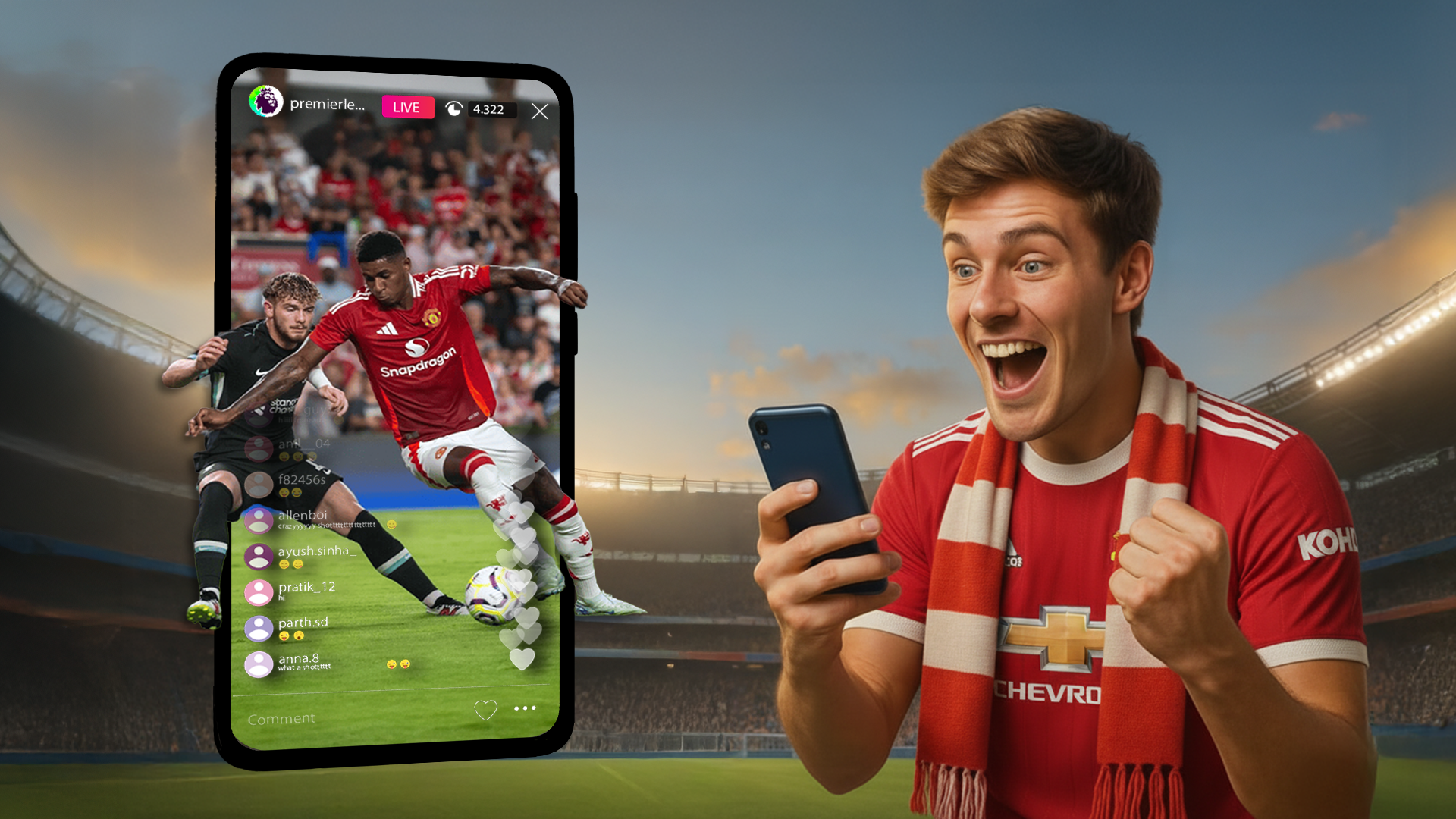Introduction
Could the next billion football fans grow up never seeing a horizontal match?
Today’s game is discovered, shared, and replayed inside vertical feeds, scrolling through goals, reactions, and story-sized highlights on phones. The gap is clear: football is still produced for TV, but attention lives in portrait. Recent shifts tell the story. Vertical video gets higher completion and share rates on mobile, and major sports organisations like the NBA and La Liga are shifting to vertical viewing for their mobile apps to meet younger audiences where they are.
In the blog, we’ve analysed how vertical-native experiences could reshape the UEFA Premier League, highlighting the value it brings to fans, clubs, sponsors, and broadcasters, and what it takes to shift from pilot projects to a sustainable format.
The What If…
Imagine a Premier League broadcast that speaks the native language of the phone. In a vertical format, the frame naturally tightens around the key gameplay, such as dribbles, fouls and goals, bringing viewers closer to the emotion and action that make moments memorable.

Social interactions sit in the same loop. Watching, reacting, and sharing feel like one continuous habit rather than separate steps. For brands, the canvas opens up stackable placements that don’t clutter the screen or break the rhythm of play. The result is not just a rotated or cropped feed; it is a broadcast reframed in the language of modern audiences while respecting the flow of the sport.
The Tech Enabler: QuickFlip
A true vertical-native broadcast does not require new cameras or a second production team; it requires smarter framing applied to the existing feed. QuickFlip fits into the current pipeline, ingesting the traditional 16:9 horizontal feed and reframing it into a 9:16 vertical feed in real time.
At the core is a custom AI algorithm that identifies key moments of the game and keeps them centred with smart cut detection, reading the incoming world feed and automatically detecting scene changes, replays, and camera switches instantly, preventing abrupt cuts and missed plays during transitions. In simple terms, it makes the broadcast feel purpose-built for phones without asking stadiums or production crews to re-rig.
Imagining The Vertical Premier League Experience
On matchday, pre-match shows are reframed for mobile screens, on air graphics are designed to fit the vertical canvas without blocking the action. Player faces, gestures, and small rituals are more immersive, while interviews feel like direct, one-on-one access. Fans can join in with predictions, making it interactive. Once the game kicks off, the framing adapts, going wide to show team shape or pulling in tighter to highlight moments of individual brilliance. Replays are chosen smartly to focus on contact, deflections, and timing.
After the match, instant reels are ready as vertical storylines, perfect for social media and team apps. Feeds are personalised to put a preferred team, player, or theme first. Every short clip carries a story, so the clip still makes sense outside the live environment.
The Scepticism
When people talk about vertical feeds in football, the biggest worry is that the true spirit of the game gets lost. But in reality, the widescreen broadcast will always be the main stage, while vertical becomes a second screen. Another concern is that vertical formats hide tactics or kill the atmosphere. There’s also the question of how long fans will actually stick with it.
On the flip side, vertical excels at capturing human details and on-field drama. With thoughtful use of wide shots and hybrid angles, it can still deliver the bigger picture. And as viewing habits shift from traditional TV to short, on-demand clips on mobile, vertical content is proving its impact, 71% of Gen Z prefer watching content vertically, and La Liga saw a 70% jump in app sessions and 30% increase in average time spent after adopting vertical formats. Source Link
The best way forward? Test it. Run both horizontal and vertical feeds side by side, track engagement and retention, and only build a new style of coverage if the numbers show fans actually want it.
Future Of Football
If the Premier League goes vertical-native, other leagues will adapt the idea to their own identities. Tools will evolve to add context-based overlays, co-watch modes for friends, and creator remixes that flow back into official channels. In the long term, the win is not just a new aspect ratio but a new ritual: a matchday that fits the world’s most personal screen without losing the stakes and storytelling that make football matter. Vertical will not replace tradition; it will extend the game’s reach to audiences who live football in the palm of their hand.
















